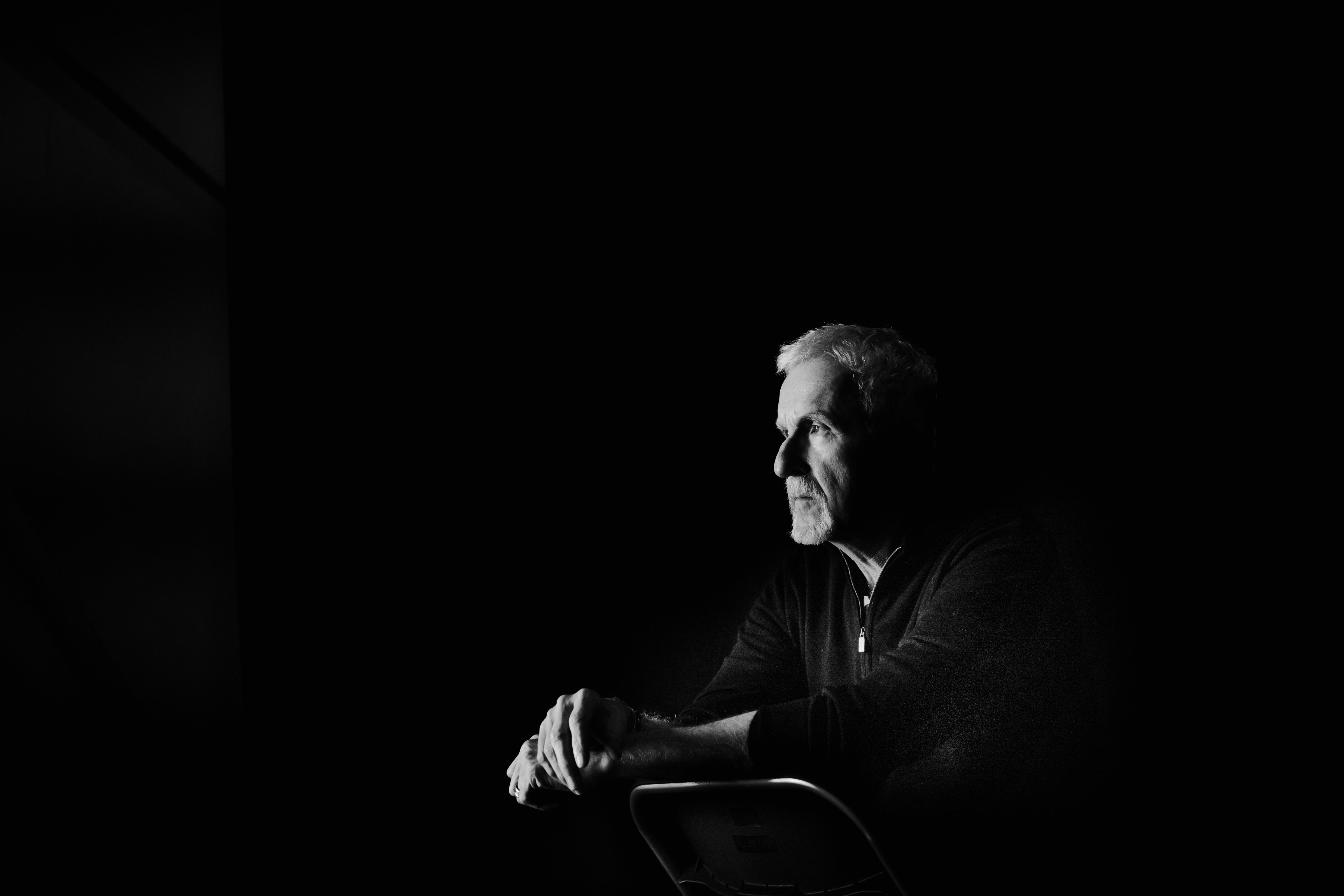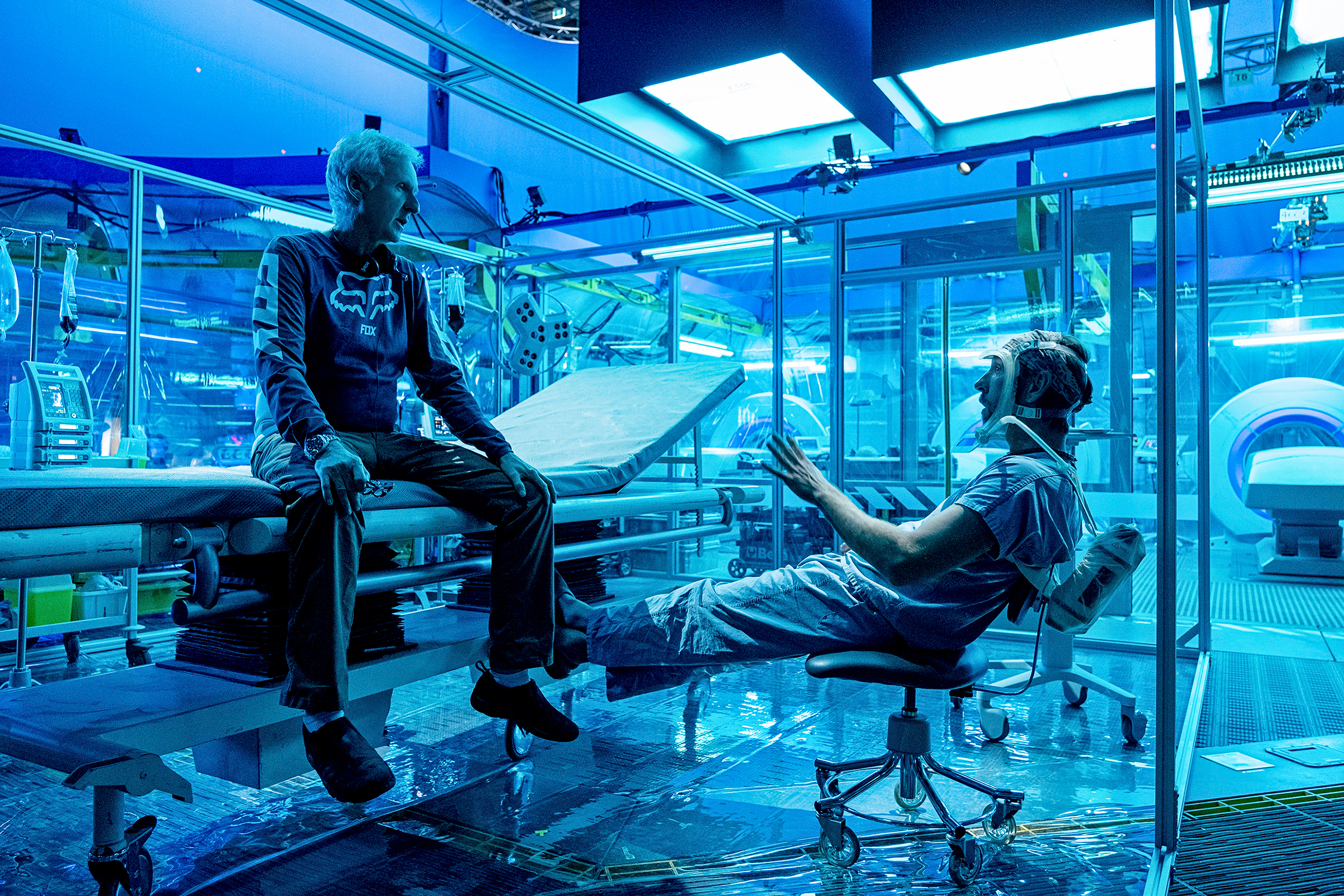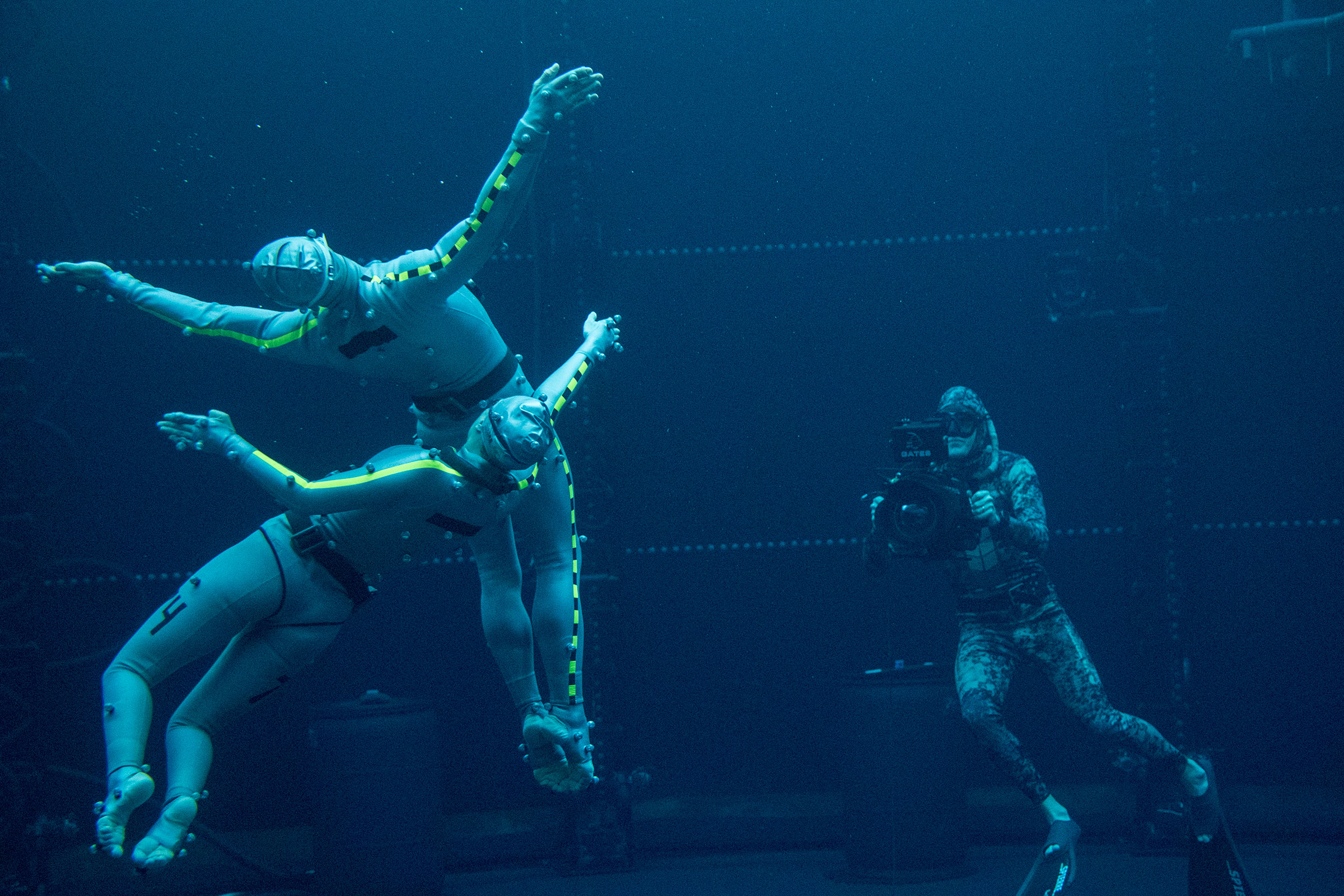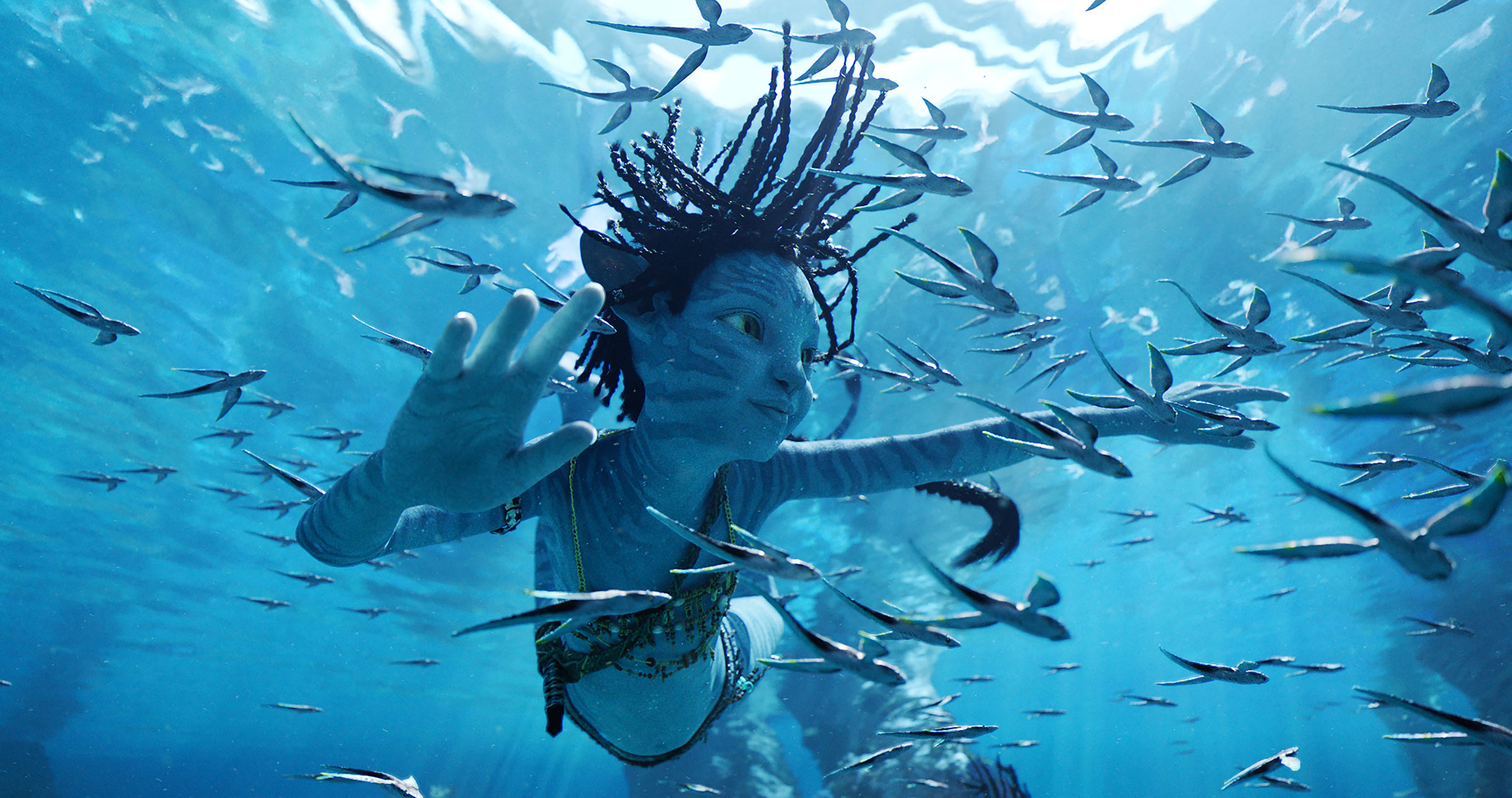James Cameron wanted a vegan set on Avatar: The Way of Water. Anything less would be hypocritical. The sci-fi epic, which reportedly cost more than $350 million, centers on aliens fending off invading humans who have depleted earth’s resources. “We couldn’t lecture oil companies and turn around and eat hamburgers,” he says.
Cameron may have also intended to make a larger point to Hollywood. When the director brought the idea for the first Avatar to 20th Century Fox, he says executives asked him to strip the script of “tree hugging” because they thought it wouldn’t sell tickets. He refused. Avatar went on to achieve massive success, grossing nearly $3 billion globally. Since then, other movies like Avengers: Infinity War have tackled climate change. Still, that Marvel blockbuster doesn’t exactly endorse green activism. In fact, it’s the villain who becomes so concerned with waning resources that he uses magic to snap his fingers and demolish half of all life in the universe. “I can relate to Thanos,” Cameron says. “I thought he had a pretty viable answer. The problem is nobody is going to put up their hand to volunteer to be the half that has to go.”

As one of the most successful directors in history, Cameron could have snapped his fingers and mandated the new on-set catering rules. After all, he has made three of the four highest-grossing movies of all time, and never lost a single dollar on any of his nine feature films. Over Super Bowl weekend, two of his movies, Way of Water and a 25th-anniversary rerelease of Titanic, topped the global box office.
But the famously mercurial director is attempting to become a more collaborative leader. So he solicited the opinion of his crew. “We all sat down together in a council circle,” he says. “I said, ‘This is what I want to do. If everyone wants to start screaming and throwing stuff at me, maybe we won’t do it. But if people grudgingly nod, then we’re going ahead.’” They grudgingly nodded. Whether it occurred to Cameron that one of the 200 crew members might not feel comfortable objecting to their boss is unclear.

Still, he’s trying. The shoot for Titanic was notoriously grueling: Kate Winslet said she almost drowned twice, chipped a bone in her elbow, and endured tirades from Cameron—though she added that he yelled at the crew even more than at the actors. She insisted that a studio would have to “pay me a lot of money to work with Jim again.” Decades later, she not only signed on to Way of Water but also learned to hold her breath for over seven minutes for the role. Her decision to return to the water tank with Cameron, despite previous grievances, is perhaps an indication that at 68 years old, the exacting visionary has started to chill out.
Way of Water, which Cameron admits is a personal film, charts a similar journey for its hero Jake Sully (Sam Worthington). After infiltrating the alien race known as the Na’vi in the original, Jake has settled down with his love, Neytiri (Zoe Saldaña), and their brood of children—five kids, just like Cameron. An ex-soldier, Jake barks orders at his family, not unlike a director. The kids chafe, and Jake has to learn how to trust them.
But even this more enlightened Cameron hasn’t lost his edge. In the 1990s, Hollywood executives predicted Titanic would flop. It not only set box-office records, but the movie is still tied for the most Oscars won in a single night. A similar narrative dogged both Avatars. Before its release, the general consensus was that Way of Water’s delays, bloated budget, and lack of diehard fans would kill the franchise. But Way of Water has made $2.2 billion so far and is currently vying with Titanic to become the third highest-grossing film of all time. (The original Avatar is still the first.)
Cameron can’t help but crow. At this point, who can blame him? “Everyone made a big deal out of ‘It’s been 13 years, there’s no cultural footprint, blah blah blah,’” he says. “All the naysayers suddenly don’t exist.”
Cameron logs on to our video call from New Zealand. He is working out of the office where Peter Jackson once labored over the Lord of the Rings movies. His production team has projected a massive photo of the Titanic behind him for our two-hour conversation, a looming reminder of his success. When I ask if we can begin the interview he quips, “Fortune favors the bold.”
“Well, maybe not always,” I say, gesturing to the picture of the high-tech marvel on which some 1,500 people lost their lives. Cameron nods and raises a finger to punctuate an addendum. “Fortune doesn’t favor the careless.”
Cameron’s critics have called him stubborn, abrasive, and unrealistically ambitious. But he’s not careless. The director, who was born in Northern Ontario, is entirely self-taught: He photocopied dissertations on filmmaking that he had found in the USC library between shifts driving a truck to deliver hot lunches to California schools. On those runs, the passenger seat held binders full of his photocopies on visual-effects technology, knowledge that would eventually allow Cameron help design a camera that became the basis of the model currently attached to the Mars rover and another that could shoot actors underwater.

What he couldn’t study was how to make a film financially successful. And yet his movies drive return visits to theaters. Audiences saw Titanic and came back with friends and family in tow to watch it over and over again. Though Way of Water premiered below box-office expectations, it has proved to have a long tail. “There was a guy in the Netherlands who just hit 100 times he’s seen it in movie theaters,” says Cameron. “Not sure I want to meet that person. But certainly anecdotally, many, many people are seeing it two, three, four times.”
Review: Avatar: The Way of Water Will Shape the Moviegoing Experience—Maybe Not for the Better
After the first Avatar achieved historic success in 2009, Fox was eager to make a sequel. But Cameron took a break—though his vacations are rarely relaxing: He designed a submarine and cozied into its 43-in.-wide cockpit to become the first person to complete a solo dive to the Mariana Trench, the deepest part of the sea. He produced documentaries about the oceans, invested in a pea-protein factory for vegan food, and worked with Indigenous groups in Brazil to advocate for the Amazon. (Cameron has been criticized for appropriating Indigenous cultures in Avatar. He has said his intention is to celebrate Indigenous cultures.)
Cameron then spent years laying out what was originally supposed to be a trilogy but ballooned into a five-movie epic about the standoff between the Na’vi of Pandora and human colonists. “I was trying to do a simulation of, OK, I’m Peter Jackson making Lord of the Rings except Lord of the Rings doesn’t exist yet, so I need to go be Tolkien and create Lord of the Rings, and then I can go be Peter Jackson.” He grins as he compares himself to two celebrated storytellers. “A little bit cheeky and ambitious,” he admits. “But I wasn’t adapting some big pantheon of books that existed. I had to go do that.”

Yet even Cameron needed help. In 2013, he provided a writers’ room with 800 pages of notes, generously whittled down from his original 1,300. The group outlined the story in six months and then spent the better part of a decade writing the films that Disney, which bought 20th Century Fox in 2019, has pledged to make with Cameron. All of the writers, save one, had episodic-television experience because Cameron wanted each movie to feel complete while teasing what would come ahead—like a good season of TV. “We’re not only in the sequel game,” he says. “We’re also in the saga game.”
That plan may have proven fruitful at the box office but has yet to win over some critics. Despite being nominated for four Oscars, Way of Water still faces skepticism among Academy members. More often than not, the Academy favors smaller, more intimate dramas over sci-fi epics that rely on motion-capture technology to render human actors into aliens. Though the film snagged a Best Picture nomination, Cameron and the actors were overlooked.
Sign up for More to the Story, TIME’s weekly entertainment newsletter, to get the context you need for the pop culture you love
“How do you compare Tár to Avatar?” Cameron asks. “How do you judge which one is better? It’s ludicrous on its face.” For years, the Academy has worried that featuring little-seen films will only further diminish the shrinking audience for the Oscars, but it has still resisted honoring blockbusters. “I think it’s a bit elitist in a way that at least they shouldn’t be mystified as their audience numbers go down. It’s been a long time since a crowd pleaser won for Best Picture.” Still, he admits, “From experience, it’s better to win than not win. It’s better to be nominated than not nominated, no matter how much you want intellectually to argue the whole thing away.”
Cameron’s best ideas come to him in dreams. The filmmaker often quips that he has a free streaming service running in his mind every night. He wakes up, sketches, and retroactively constructs a narrative to reach the image in his mind’s eye. The Terminator was born from a vision of the killing machine’s endoskeleton. He manifested Avatar after a dream about a bioluminescent forest.
For me, Cameron’s most indelible image is a sinewy Sarah Connor (played by Linda Hamilton, whom Cameron later married and divorced) doing chin-ups at the beginning of Terminator 2, her muscles so radical on a female frame at the time that my young mind seized onto her as the platonic ideal of a strong woman. Cameron has a particular obsession with ruthless mothers, from Sarah Connor guarding her messiah son with a shotgun in Terminator 2 to Sigourney Weaver’s Ellen Ripley donning the exoskeleton in Aliens to save her surrogate daughter. “There’s nothing more primal than a mama bear protecting her cub,” says Cameron. The director credits his mother, who joined the Canadian Army Reserve and came home with a rifle, as his inspiration.
In Way of Water, Winslet’s pregnant character Ronal grabs her weapons to head for war. Her husband suggests that maybe she stay home, and she snarls, “We ride!” Cameron wrote that scene seven years ago, before seeing something similar in John Krasinski’s A Quiet Place in which Emily Blunt’s character takes on a monster with a shotgun shortly after giving birth. “I had already had that idea—I’m not trying to take credit for being first or anything—but I loved that because we never see that in movies,” says Cameron. “Pregnancy is treated as a condition or affliction as opposed to a natural part of the human life cycle.” He muses that women have been delivering babies in precarious circumstances for centuries. “They might be giving birth, and 10 seconds later spearing a sabertooth tiger that happened to attack the camp. They don’t have a choice. That’s how we evolved,” he says. “If people don’t buy it, they need to do their research.”
Even as Cameron has been praised for his capable female characters, he’s also taken heat for his unwavering definition of what makes for a feminist hero. The sabertooth-tiger image is enticing for a movie director. But it is a fantasy. The idea of fighting a wild cat after giving birth may empower some women but isolate many who have endured complicated or even life-threatening births. It’s almost as if these musings come from a man who has never been pregnant.

Similarly, when he opines on how female superheroes should dress, he does so without the particular female experience of being judged based on one’s appearance. When Patty Jenkins’ Wonder Woman debuted in 2017, Cameron complained about the character’s outfit, which he still believes serves “an objectified paradigm.” He has a point. But he also admits he’s probably not the person to be criticizing female directors. “I don’t have an issue with Wonder Woman. I loved the movie,” he says, quickly. “What was elusive to me at the moment was it’s OK if the woman wants to be beautiful and dress well not for the male gaze, but for her own gaze in the mirror, right? I had maybe missed that part of it at the time,” he says. “You know, life is about stumbling and people push back and we talk about it and things get better.”
Read More: Wonder Woman Breaks Through
Still, he can’t help but qualify his mea culpa. “It was necessary to have a female director own a major action movie,” he says before adding, “though Kathryn Bigelow had been doing that for a while.” He sings the praises of Bigelow, who happens to be his ex-wife, for directing movies like Point Break that plumb the depths of male relationships. In 2010, Bigelow became the first female director to win an Oscar, for The Hurt Locker, another movie about the complex male psyche. (She also happened to beat out Cameron for Best Picture.) “She would have turned down any superhero movie she was offered if it was a female lead. And that’s the healthier perspective, I think, personally,” he says. “Why not have women direct male characters? Have a woman direct Batman. Now, you’re talking.”
Given that Cameron wrote the first draft of Avatar in 1995, he will likely spend the rest of his career in the world of Pandora. “As long as I don’t get hit by a cement truck, we’re going to try to keep the quality up,” he says. He describes Movie 4 as a “corker” and says Movie 5 brings it all home “with a thunderclap.” He teases that, yes, we will see an earth decimated by climate change, but none of the movies will actually be set there. He wants to focus on how to save a planet, not destroy one.

That’s an awful long time to spend in one imaginary universe, especially for a filmmaker who has ping-ponged from sci-fi thrillers to romantic epics to underwater documentaries. When I ask if he ever thinks about doing anything else, he claims he’s already been there and done most of that: “I have found a deep vein that I can mine here, a connection with global audiences—why squander that?” These movies afford him an opportunity to manifest nearly every image he’s ever wanted to see onscreen and an unprecedented platform to spread his conservationist message. He will remain an activist. “But there are many other worthy people doing that approach,” he says. “I made a decision that the best use of my skill set and my voice was to do what I’m doing right now.”
He has shot Avatar 3 and the first act of Avatar 4, at which point there will be a big time jump in the story. He estimates he will spend at least eight more years churning out the remaining movies—if he stops at Avatar 5. “It might be open-ended after that,” he says. “But there will come a point where I’ll have to pass the baton, just physiologically. Mortality is going to come knocking on the door at some point.”
- Donald Trump Is TIME's 2024 Person of the Year
- Why We Chose Trump as Person of the Year
- Is Intermittent Fasting Good or Bad for You?
- The 100 Must-Read Books of 2024
- The 20 Best Christmas TV Episodes
- Column: If Optimism Feels Ridiculous Now, Try Hope
- The Future of Climate Action Is Trade Policy
- Merle Bombardieri Is Helping People Make the Baby Decision